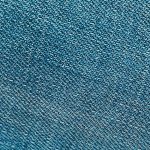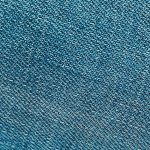A selvedge ID is the colored edge on premium denim that shows where and how the fabric was made. You’ll spot these colored threads running along the denim’s edge—red often means classic Japanese mills, blue hints at American origins, and green signals eco-friendly production. These colors tell a story about quality and craftsmanship, helping you identify and appreciate authentic denim. If you want to uncover the full meaning behind each shade and its history, there’s more to explore.
Table of Contents
Key Takeaways
- A selvedge ID is the colored thread along denim edges, indicating fabric origin and quality from specific mills or brands.
- Red selvedge IDs denote traditional craftsmanship, commonly linked to high-quality Japanese denim mills like Kurabo and Kaihara.
- Blue selvedge IDs represent a blend of vintage techniques and modern style, often associated with American mills such as Cone Denim.
- Green selvedge IDs highlight eco-friendly, sustainable denim production, appealing to environmentally conscious consumers.
- Yellow and gold selvedge IDs signify premium, vintage-inspired craftsmanship, often used for limited edition or classic designs.
What Is Selvedge Denim?
Selvedge denim refers to a type of denim fabric woven on traditional shuttle looms, creating a tightly woven edge that prevents unraveling. When you look closely at selvedge denim, you’ll notice a clean, finished edge, often highlighted by a colored thread. This edge isn’t just decorative—it preserves the fabric’s integrity over time.
Unlike mass-produced denim made on modern looms, selvedge denim tends to be denser and more durable. You’ll often find selvedge denim in premium jeans because it ages beautifully, developing unique fades based on your wear patterns.
If you want jeans that last and gain character with time, selvedge denim is a smart choice. It’s about quality, craftsmanship, and longevity, setting it apart from regular denim fabrics.
The Origin of Selvedge IDs
Although you mightn’t have noticed before, the colored threads along the edges of denim carry a story rooted in tradition and functionality.
Selvedge IDs originated as a practical way for mills to mark their fabric, ensuring quality and origin could be traced easily. Back when denim was woven on shuttle looms, these colored edges prevented fraying and indicated which mill produced the fabric.
Over time, these simple identifiers evolved into symbols of craftsmanship and authenticity. When you see that distinct colored stripe, you’re looking at a piece of history reflecting the pride and heritage of denim makers.
Understanding this origin helps you appreciate why selvedge IDs remain a beloved feature in premium denim today.
How Selvedge IDs Are Created
When you examine the edges of high-quality denim, you’ll notice distinct colored threads woven directly into the fabric.
These threads form the selvedge ID, created during the weaving process on shuttle looms. Unlike modern looms that cut and sew fabric edges, shuttle looms produce a continuous fabric strip with tightly bound edges.
The colored threads are inserted deliberately as the fabric is woven, serving as a signature or identifier for the mill or brand. You mightn’t realize it, but each selvedge ID involves careful planning—choosing thread colors and placement to guarantee durability and style.
This unique edge prevents fraying and distinguishes genuine selvedge denim from regular fabric, linking craftsmanship to visual identity.
Common Selvedge ID Colors and Their Significance
You’ll often spot red, blue, or green selvedge IDs on denim, each carrying its own meaning.
Red is the most classic and widely recognized, while blue and green can indicate different mills or production runs.
Understanding these colors helps you identify the origin and quality of your jeans.
Red Selvedge ID
Red selvedge ID stands out as one of the most recognizable markers in denim craftsmanship. When you see a red selvedge, it usually signals premium quality and traditional shuttle loom weaving. This vibrant color often represents heritage brands and vintage-inspired designs, giving your jeans a classic, authentic edge. Because red is bold and eye-catching, it highlights the meticulous attention to detail in the denim’s construction.
Here’s a quick look at what red selvedge ID often means:
| Feature | Meaning |
|---|---|
| Color | Bold, attention-grabbing red |
| Quality | Premium, heritage craftsmanship |
| Style Statement | Vintage, classic denim look |
Blue Selvedge ID
Blue selvedge ID offers a subtle yet distinct touch to denim, often symbolizing a balance between tradition and modern style.
When you see blue stitching on the selvedge edge, it reflects a dedication to timeless quality without shouting for attention. This color choice is popular among brands aiming for a classic look that still feels fresh and versatile.
It suggests durability and a nod to heritage while fitting seamlessly into contemporary fashion. You’ll find blue selvedge denim works well for both casual and smart-casual outfits, making it a flexible option in your wardrobe.
Choosing blue means you’re appreciating craftsmanship with a refined, understated flair, perfect if you prefer your denim to speak softly but carry lasting impact.
Green Selvedge ID
Although green selvedge ID mightn’t be as common as other colors, it carries a unique significance that denim enthusiasts appreciate.
When you spot green on a pair of jeans, it often indicates eco-friendly production methods or organic cotton use. This color choice shows a commitment to sustainability without compromising style or durability.
Here’s what green selvedge IDs typically represent:
- Environmentally conscious manufacturing processes
- Use of organic or recycled cotton fibers
- Brands focused on reducing chemical dyes and water waste
- A subtle nod to nature, blending tradition with modern responsibility
When you choose denim with a green selvedge ID, you’re supporting a greener future while enjoying quality craftsmanship.
Red Selvedge ID: The Classic Choice
You’ll notice red selvedge ID is often called the classic choice for good reason.
It carries a rich history that many denim fans appreciate and seek out.
When you spot red selvedge, you’re seeing a timeless symbol of quality and tradition.
Historical Significance
Since the early days of denim manufacturing, the red selvedge ID has stood out as a symbol of quality and authenticity. When you spot this classic red line, you’re looking at a piece of history that dates back to traditional shuttle looms.
Here’s why the red selvedge ID matters historically:
- It marked the premium denim made on old-fashioned shuttle looms.
- It guaranteed durability and excellent craftsmanship.
- It helped brands differentiate their products in a crowded market.
- It became a hallmark of American and Japanese heritage denim.
Popularity Among Denim Fans
When denim enthusiasts seek authenticity and quality, they often turn to the red selvedge ID as their go-to choice. This classic color signals genuine craftsmanship and timeless style, making it a favorite among collectors and casual wearers alike. Choosing red means you value tradition and durability, as it’s linked to iconic denim brands with rich histories. You’ll notice the red edge peeking out when cuffed, a subtle nod to your appreciation for heritage denim.
| Feature | Benefit | Why You’ll Love It |
|---|---|---|
| Red Selvedge ID | Symbol of authenticity | Shows your denim knowledge |
| Durable fabric | Long-lasting wear | Saves money over time |
| Classic appeal | Timeless style | Matches any wardrobe |
Blue Selvedge ID: A Symbol of Tradition
The blue selvedge ID stands as a powerful emblem of denim heritage, instantly recognizable to enthusiasts and newcomers alike.
When you spot this classic blue edge on your jeans, you’re witnessing a symbol deeply rooted in tradition. It reflects timeless craftsmanship and connects you to the origins of selvedge denim.
Here’s what the blue selvedge ID represents for you:
- Classic appeal that never goes out of style
- A nod to vintage denim manufacturing methods
- Durable construction, ensuring longevity
- A subtle yet distinctive detail appreciated by denim purists
Green Selvedge ID: Unique and Rare
Green selvedge IDs catch your eye with their distinctiveness and rarity, setting your denim apart from more common styles.
When you choose jeans with a green selvedge ID, you’re wearing something that often signals eco-conscious production or limited-edition runs. This color is less widespread than classic reds or blues, making your pair stand out in a crowd.
Green selvedge IDs can indicate organic cotton use or environmentally friendly dyeing processes, appealing to those who care about sustainability.
Plus, these IDs usually come from brands focused on quality over quantity, so your jeans aren’t just unique in color but in craftsmanship.
Wearing green selvedge means you appreciate rarity and responsibility, combining style with a statement.
Yellow and Gold Selvedge IDs: Meaning and Usage
Yellow and gold selvedge IDs bring warmth and a touch of luxury to your denim collection.
These colors often signify premium quality and a nod to classic craftsmanship. When you see yellow or gold threads along the edge, you’re looking at denim that stands out subtly but confidently.
Yellow and gold selvedge threads quietly signal premium quality and timeless craftsmanship in your denim.
Here’s what yellow and gold selvedge IDs usually mean for you:
- They highlight vintage-inspired designs, giving your jeans a nostalgic feel.
- These colors often represent specialty or limited edition runs.
- Yellow and gold can indicate a particular fabric weight or weave style.
- They add a unique aesthetic, making your denim versatile for casual or upscale looks.
Choosing yellow or gold selvedge means embracing both tradition and style.
How to Identify Different Mills by Selvedge ID
You can spot different mills by paying close attention to their signature selvedge colors.
Each color often reveals the mill’s origin and unique craftsmanship.
Once you learn these color codes, identifying where your denim comes from becomes much easier.
Signature Colors Explained
Recognizing signature colors on selvedge edges helps you pinpoint the mill behind your denim. Each mill uses distinct thread colors to mark their fabric’s origin, acting like a fingerprint.
When you inspect the selvedge ID, these colors provide clues about where and how your jeans were made. Here’s what to look for:
- Red – Commonly used by Japanese mills like Kurabo and Kaihara.
- Blue – Often associated with American mills such as Cone Denim.
- Green – Typically signals denim from smaller, niche Japanese producers.
- Orange – Used by some European mills, indicating unique production methods.
Mill Origins Decoded
While selvedge colors give you a broad idea of a denim’s origin, identifying the specific mill behind your jeans requires a closer look at the selvedge ID itself. Each mill uses unique patterns, color combinations, or symbols within the selvedge edge to mark their fabric.
For example, Japan’s famed Kaihara mill often incorporates a red and white stripe, while the Okayama mill might add a subtle logo or alternate color thread. By knowing these distinctive marks, you can trace your denim back to its manufacturer, revealing craftsmanship details and quality standards unique to that mill.
Paying attention to these subtle ID features helps you appreciate the heritage and authenticity of your jeans, making your selvedge denim experience more informed and rewarding.
The Role of Selvedge IDs in Denim Collecting
Because selvedge IDs reveal a denim’s origin and craftsmanship, they play an essential role in denim collecting. When you understand these IDs, you can identify authentic pieces, which boosts your collection’s value.
Collectors often seek specific selvedge colors linked to renowned mills or historical significance. These IDs also help you track production eras, making it easier to spot vintage or rare denim. Plus, selvedge IDs give you a way to connect with the story behind each pair.
Here’s why selvedge IDs matter in your denim collection:
- Authenticate and verify denim origins
- Identify unique or rare mill productions
- Trace manufacturing periods and batch info
- Enhance storytelling and personal connection to each pair
Custom and Limited Edition Selvedge IDs
When you choose custom or limited edition selvedge IDs, you get more than just a fabric edge—you gain a unique signature that sets your denim apart.
Brands collaborate with artisans or use exclusive looms to create selvedge IDs featuring rare colors, intricate patterns, or special symbols. These IDs often tell a story, marking a specific collection or celebrating a milestone, making your jeans a wearable piece of art.
You’ll notice these limited editions rarely appear in mass production, increasing their desirability and value among collectors.
Opting for a custom selvedge ID also lets you express your personal style, as some brands offer tailored options.
Wearing denim with a custom or limited edition selvedge ID means you’re part of a niche community that values authenticity and craftsmanship.
Caring for Selvedge Denim to Preserve the ID Colors
Choosing a custom or limited edition selvedge ID means you’ve invested in a unique detail that deserves care. To preserve the vibrant colors of your selvedge ID, you need to handle your denim thoughtfully.
Here’s how you can keep those colors sharp and vivid:
- Wash your jeans sparingly and always inside out to reduce color fading.
- Use cold water and mild detergent to protect the fabric and dye.
- Avoid the dryer; air dry your jeans flat or hang them to prevent shrinkage and wear.
- Spot clean stains promptly to minimize full washes and maintain the selvedge’s integrity.
Frequently Asked Questions
Can Selvedge IDS Fade or Change Color Over Time?
You might notice your selvedge IDs fade, you might see their colors change, and you might wonder why. Over time, exposure to sunlight, washing, and wear can cause these shifts, so take care to preserve their original look.
Are Selvedge IDS Used in Fabrics Other Than Denim?
Yes, you’ll find selvedge IDs in fabrics beyond denim, like canvas or twill. Manufacturers use them to showcase craftsmanship and fabric quality, so you’ll see selvedge details in various high-quality textiles, not just jeans.
How Do Selvedge IDS Affect the Price of Denim Jeans?
You’ll notice selvedge IDs often raise denim prices because they signal higher quality and craftsmanship. Brands use unique colors or patterns to showcase exclusivity, making those jeans more desirable and expensive for you.
Can I Customize My Own Selvedge ID When Ordering Jeans?
Like painting your signature on a canvas, you can often customize your selvedge ID when ordering jeans. Many brands let you choose colors or patterns, so your denim truly reflects your personal style and story.
Do All Countries Have Their Own Unique Selvedge IDS?
Not all countries have unique selvedge IDs, but many denim producers use distinct colors or patterns to represent their origin. You’ll notice specific selvedge details tied to regions or mills worldwide, though it’s not universal.
- How to Create Negative Space in Your Tie-Dye Designs - July 14, 2025
- A Guide to Eco-Friendly Tie-Dyeing Practices - July 14, 2025
- How to Tie-Dye Using Only Primary Colors - July 14, 2025






